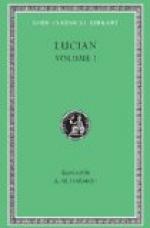The visitor is told a number of legends and stories about these houses and the people who live in them. The coming of Montezuma is the great idea which permeates all the legends and stories. According to many of the people, Montezuma left Mexico, during the remote ages, in a canoe built of serpent-skins. His object was to civilize the East and to do away with human sacrifice. He communicated with the people by means of cords in which knots were tied in the most ingenious manner. The knots conveyed the meaning of the Prophet, and his peculiar messages were carried from pueblo to pueblo by swift messengers, who took great delight in executing their tasks.
A number of exceedingly romantic legends are centered around the Pueblo de Taos, which is about twenty miles from Embudo. Taos is considered the most interesting and the most perfect specimen of a Pueblo Indian fortress. It consists of two communistic houses, each five stories high, and a Roman Catholic church (now in a ruined condition) which stands near, although apart from the dwellings. Around the fortress are seven circular mounds, which at first suggest the idea of being the work of mound-builders. On further examination they prove to be the sweating chambers or Turkish baths of this curious people. Of these chambers, the largest appears also to serve the purpose of a council chamber and mystic hall, where rites peculiar to the tribe (about which they are very reticent) are performed.
The Pueblo Indians delight to adorn themselves in gay colors, and form very interesting and picturesque subjects for the artist, especially when associated with their quaint surroundings. They are skilled in the manufacture of pottery, basket-making and bead work. The grand annual festival of these Indians occurs on the 30th of September, and the ceremonies are of a peculiarly interesting character.
Jesuitism has grafted its faith upon the superstitions of the Montezumas, and a curious fruitage is the result. The mystic rites of the Pueblo Indians, performed at Pueblo de Taos in honor of San Geronimo (St. Jerome), upon each succeeding 30th day of September, attract large concourses of people, and are of great interest to either the ethnologist, ecclesiastic or tourist. A brief description can give but a faint idea of these ceremonies, but may serve to arouse an interest in




